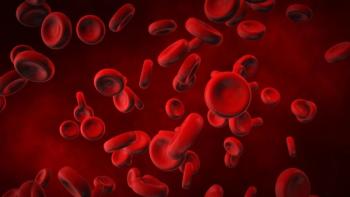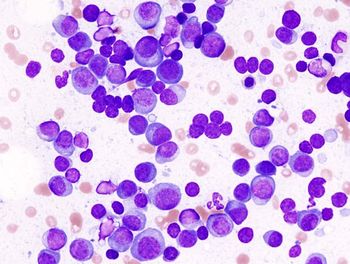
Prior Encouraging Data Support Further Study of Niraparib in Glioblastoma

Findings from a proof-of-concept study show a potential survival benefit with niraparib/radiotherapy in patients with newly diagnosed glioblastoma.
CancerNetwork® spoke with Nader Sanai, MD, about plans to evaluate treatment with niraparib (Zejula) vs temozolomide (Temodar) among patients with newly diagnosed MGMT unmethylated glioblastoma as part of the phase 3 Gliofocus study (NCT06388733).1
Specifically, Sanai, director of the Ivy Brain Tumor Center and J.N Harber Professor of Neurological Surgery, Francis and Dionne Najafi chair for Neurosurgical Oncology, and chief of neurological oncology at Barrow Neurological Institute, highlighted findings from a proof-of-concept hybrid study (NCT05076513) supporting further evaluation of niraparib in this population. He detailed how the design of this study differed from other trials in brain cancer by emphasizing a pharmacokinetic and pharmacodynamic approach.
Findings from the proof-of-concept study, which Sanai and coinvestigators presented at the
Transcript:
The data for this study are interesting in that they arrived through a pharmacokinetic- and pharmacodynamic-driven approach. For a lot of drug development in brain cancer, we go through a typical phase 1/2 run-up with some evidence of potential clinical efficacy in a phase 2 [study] that then leads to adequate confidence to go into a randomized study of phase 2 or 3. However, that approach has not served our field very well in the sense that we typically have a difficult time identifying agents in the preclinical stage with a high degree of predictivity of how they will perform in the clinical stage. Then, in the early clinical stages of clinical trials, there’s a lot of patient heterogeneity. As a consequence, it’s very easy to have a phase 1/2 study with some small subset of patients who do very well. An assumption is made, oftentimes, that it is because of the drug. But in fact, in an uncontrolled setting, it’s just because of this patient heterogeneity with respect to the tumor biology.
The proof-of-concept studies in support of the niraparib Gliofocus trial focused on identifying biological evidence of drug effect paired with clinical evidence. These are what’s called phase 0 hybrid studies. This particular study was performed at the Ivy Brain Tumor Center in Phoenix, [Arizona] and basically took patients with newly diagnosed glioblastoma who were unmethylated and provided them with 2 or 3 days of niraparib presurgically before they had any treatment. Then, at the time of the operation when the tumors were resected [and we] looked at different compartments of the tumor, [we] asked the questions, "To what extent is this drug penetrating the outer reaches of the tumor? To what extent is it modulating its target?"
Then for those patients who did have a positive response in these [pharmacokinetic/pharmacodynamic] profiles, they then went on to get [niraparib] combined with radiotherapy. We knew that those patients who are getting the drug in a therapeutic form had reason to have a clinical response, and that gave us a little bit more confidence in interpreting those clinical data. When those data were read out at the last ASCO Meeting, it was considerably better than what we had seen in the historical data. Median survival approached 20 months, which was far in excess of what we’ve seen historically for unmethylated [glioblastoma].
References
- A study comparing niraparib with temozolomide in adult participants with newly-diagnosed, MGMT unmethylated glioblastoma. ClinicalTrials.gov. Updated June 24, 2024. Accessed August 27, 2024. https://tinyurl.com/y25er8p9
- Sanai N, Umemura Y, Margaryan T, et al. Niraparib efficacy in patients with newly-diagnosed glioblastoma: Clinical readout of a phase 0/2 "trigger" trial. J Clin Oncol. 2024;42(suppl 16):2002. doi:10.1200/JCO.2024.42.16_suppl.2002
Newsletter
Stay up to date on recent advances in the multidisciplinary approach to cancer.

















































































